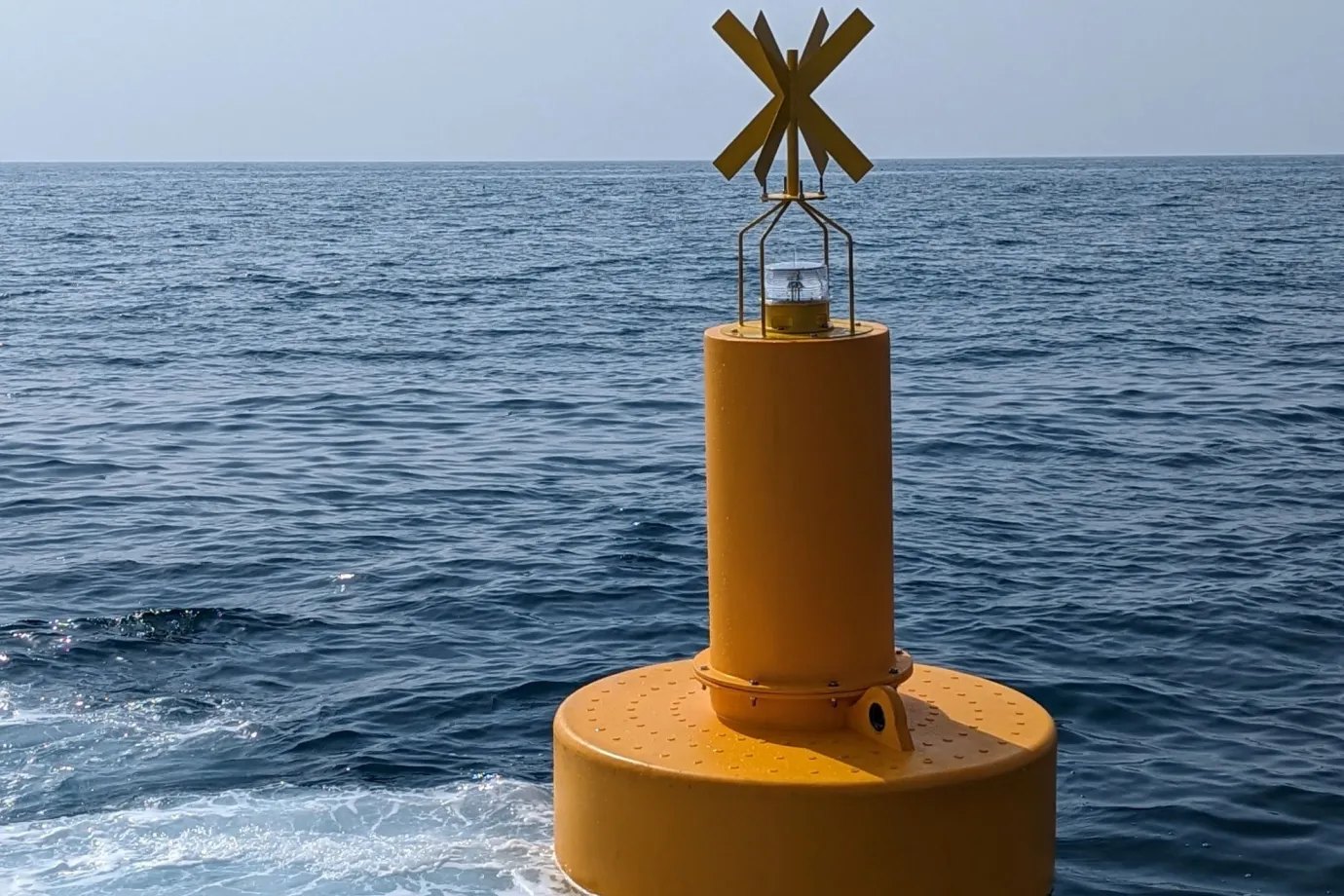In marine construction, dredging, and similar projects, selecting the right silt curtain is more than a technical decision—it’s a cornerstone of environmental responsibility and operational success. These essential tools prevent sediment from spreading into unintended areas, safeguarding marine ecosystems while ensuring compliance with environmental regulations. Despite their critical role, silt curtains are often treated as an afterthought, with decisions based primarily on cost or convenience rather than functionality.
When a silt curtain is poorly chosen, the consequences can be severe. Financially, failures can lead to costly repairs, project delays, and regulatory fines. Environmentally, sediment spread can harm aquatic ecosystems, leading to irreversible damage and reputational harm for project stakeholders. Selecting the right turbidity curtain minimizes these risks, ensuring project efficiency and compliance.
Choosing the wrong barrier can cost you. Make it right the first time with our proven “range of silt curtains” for environmental protection.

What Is a Silt Curtain?

A silt curtain, a sediment barrier or turbidity curtain, is critical in controlling sediment movement during marine construction and dredging activities. These floating barriers are strategically installed to contain disturbed sediments, preventing them from spreading into surrounding waters and ecosystems.
Unlike physical barriers that touch the seabed, silt curtains extend partially into the water column. This design allows water to flow freely while trapping suspended sediment within the project site. Silt curtains are indispensable in areas where environmental protection is paramount, such as near coral reefs, sensitive wetlands, or public beaches.
Common uses of silt curtains include:
- Containing sediment during dredging or excavation.
- Protecting marine environments during pile driving or bridge construction.
- Ensuring compliance with environmental regulations for projects near waterways.
See also: “Turbidity Curtains in Environmental Protection:
Key Components of a Silt Curtain

Understanding the main components of a silt curtain helps ensure that the silt curtain selection meets project-specific needs:
- Freeboard: This is the visible portion above the waterline, stabilizing the curtain and preventing surface sediment spread.
- Draft: The submerged portion that traps sediment. It must be deep enough to suit the water depth and sediment behavior.
- Flotation: Polyethylene foam provides buoyancy, keeping the curtain in place. High-density, oil-resistant foam ensures durability.
- Skirt: The curtain’s main body, usually made from permeable or impermeable materials, contains sediment. The material is chosen based on environmental and sediment conditions.
- Ballast: A weighted chain at the base ensures the curtain stays upright and stable, even in currents or waves.
- Connectors: Sturdy, molded joints link curtain panels, allowing for long, seamless barriers tailored to project needs.
The Relationship Between Cost, Quality, and Performance
While all silt curtains may look similar at first glance, their performance varies greatly based on materials, design, and construction. Off-the-shelf models often lack the durability and precision required for demanding conditions. Conversely, investing in a high-quality, tailored silt curtain ensures optimal performance, reduces maintenance needs, and lowers the risk of project delays caused by curtain failure.
By understanding what a silt curtain is and how its components function together, you’ll be better equipped to choose a model that meets your project’s environmental, operational, and budgetary requirements.
The Risks of Poor Silt Curtain Selection

Selecting the wrong silt curtain for your project can lead to numerous challenges, from financial setbacks to environmental damage and reputational harm. Properly chosen silt curtains are vital for effective sediment control in marine construction and dredging operations. Understanding the potential risks of poor selection underscores why investing in the right silt curtain is critical.
Financial, Environmental, and Reputational Risks
Financial loss is one of the most immediate consequences of using the wrong silt curtain. A low-quality or improperly specified curtain may fail under pressure, leading to costly repairs, project delays, and regulatory fines. Idle machinery, extended labor hours, and replacement equipment can quickly escalate expenses.
Environmental risks are equally significant. When a silt curtain fails, sediment can escape into surrounding waters, harming aquatic ecosystems. Sediment clouds can smother coral reefs, reduce light penetration needed for underwater plants, and harm fish habitats. These ecological damages can attract fines and non-compliance penalties from regulatory authorities.
Reputational harm is another major concern. Clients, stakeholders, and local communities often scrutinize environmental practices. Failing to contain sediment effectively can damage your company’s image, leading to a loss of trust and potential future business opportunities.
Common Failure Modes
Improperly specified or low-quality silt curtains often fail due to avoidable factors, including:
- Material Failures: Using a curtain made of substandard or unsuitable materials increases the likelihood of tears and structural breakdowns. For example, skirts designed for calm waters may not withstand rough currents or high wind conditions.
- Improper Installation: Even the best silt curtains can fail if incorrectly installed. Insufficient anchoring, improper deployment techniques, or failure to consider site-specific conditions can result in curtains that drift, tear, or collapse.
- Inadequate Environmental Assessments: Ignoring site-specific conditions such as current strength, water depth, or wave action often leads to silt curtains that cannot handle the environment’s stresses.
- Lack of Maintenance: Wear and tear can degrade a silt curtain over time. Without routine inspections and timely repairs, the curtain’s performance diminishes, increasing the risk of sediment leakage.
What Happens When Silt Curtains Fail?
When silt curtains fail, the consequences ripple across multiple dimensions:
- Project Delays: Addressing failures can halt progress, delaying project timelines and increasing costs.
- Environmental Damage: Uncontained sediment can harm marine life and disrupt ecosystems, leading to long-term consequences.
- Compliance Issues: Regulatory bodies may impose penalties for failing to meet environmental standards, further straining project budgets.
Selecting the right silt curtain is not just a matter of compliance but an investment in your project’s success. By avoiding poor-quality materials, ensuring proper installation, and tailoring solutions to site-specific conditions, you can mitigate these risks and ensure smooth project execution.
Key Considerations for Choosing the Right Silt Curtain

Choosing the right turbidity curtain is a critical decision that influences your project’s success and environmental compliance. The process involves evaluating multiple factors to ensure the curtain performs effectively under site-specific conditions. This section outlines key considerations to guide you in selecting the most suitable silt curtain for your needs.
1. Evaluate Environmental Conditions
Understanding the environmental conditions at your project site is the foundation of selecting the right silt curtain.
- Water Depth: The draft of the silt curtain, or its submerged portion, must align with the water depth. Too short Curtains will fail to contain sediment, while overly long curtains may drag on the seabed, causing unnecessary wear.
- Current Strength and Wave Action: Projects in areas with strong currents or rough waters require heavy-duty curtains with reinforced materials and secure anchoring systems to withstand these forces. For calmer waters, a lighter curtain may suffice.
- Sediment Type: Different sediment types, such as fine silt, clay, or coarse sand, require varying curtain designs. Permeable skirts are effective for finer particles, while impermeable skirts may be needed for more significant sediment control.
2. Plan for Installation and Deployment
The installation and deployment process significantly affects the silt curtain’s performance.
- Space and Access: Assess whether the site has adequate curtain deployment space. Limited space may necessitate creative deployment techniques or custom designs.
- Equipment Availability: Ensure the necessary tools, such as cranes, boats, and divers, are available for proper installation and anchoring. Skimping on equipment can result in improper deployment and early curtain failure.
- Trained Personnel: Having a trained crew for installation ensures the silt curtain is deployed effectively, minimizing the risk of mishaps that could compromise its functionality.
3. Balancing Initial Cost vs. Long-Term Performance
While budget constraints are often a primary concern, selecting a silt curtain based on cost can be costly in the long run.
- Low-Cost Models: Inexpensive silt curtains may use substandard materials or lack proper engineering, leading to frequent replacements, higher maintenance costs, and project delays.
- High-Quality Curtains: Investing in a durable, site-specific curtain designed to handle your project’s environmental conditions minimizes long-term costs and ensures consistent performance.
4. On-Site Equipment and Resources
The effectiveness of your silt curtain depends heavily on the availability of on-site resources.
- Anchor Handling Equipment: Properly anchored silt curtains are less likely to drift or fail under stress. Equipment like winches, anchors, and cranes can ensure secure installation.
- Maintenance Tools: Having the necessary tools for routine inspections and repairs prevents small issues from escalating into significant problems.
5. Maintenance and Monitoring Plans
A silt curtain’s performance depends on its quality and how well it is maintained.
- Regular Inspections: Check for rips, tears, or degraded flotation devices to ensure the curtain remains effective.
- Timely Repairs: Addressing damages quickly helps avoid failures that could lead to environmental contamination or project delays.
- Long-Term Monitoring: Regular monitoring ensures the curtain adapts to changing environmental conditions, such as tides or storm events, maintaining its efficacy throughout the project.
6. Importance of Working with Experienced Suppliers
Your chosen supplier can make or break your project’s sediment control efforts.
- Expertise: Look for suppliers with extensive experience and proven technical knowledge. A reputable supplier will provide tailored solutions based on your project’s unique needs.
- References and Case Studies: Review the supplier’s past projects and client feedback to gauge their reliability.
- Material Quality: Ensure the supplier uses high-grade materials to withstand your project’s environmental stresses. Substandard materials are a common cause of silt curtain failures.
Case Study: High-Performance Silt Curtain Implementation in Europe
A large-scale dredging project for a European hotel chain experienced significant setbacks when substandard silt curtains failed within weeks of installation. The initial curtains, selected based on cost alone, could not withstand the site’s strong currents and wave action. These failures resulted in sediment leakage, environmental damage, and compliance issues, leading to project delays and additional expenses.
To address the problem, the project team partnered with a supplier experienced in creating high-performance turbidity curtains. After an on-site assessment, the supplier designed custom silt curtains with reinforced skirts, durable connectors, and optimized ballast weights. These curtains were tailored to withstand the environmental conditions at the project site.
The result was a dramatic turnaround. The newly installed silt curtains contained sediment, met environmental compliance standards, and prevented further delays. This case demonstrates how choosing the right silt curtain, backed by expert engineering, ensures long-term performance and cost-effectiveness.
– Type I (ESC-100-I) – Sheltered lakes/ponds; freeboard 100 mm, draft 0.5–12 m. Floats EPS 18–22 kg/m³, buoyancy 10 kg/m; skirt 50×50 kN/m; ballast 0.8–2.8 kg/m; min anchor pull-out 10 kN.
– Type II (ESC-150-II) – Rivers/canals (low–mod energy); freeboard 150 mm, draft 0.5–12 m; EPS 18–22 kg/m³, buoyancy 23 kg/m; skirt 100×100 kN/m; ballast 1.2–6.5 kg/m; min anchor 30 kN.
– Type III (ESC-300-III) – Ports/harbours/open water; freeboard 300 mm, draft 0.5–30 m; EPS 22–29 kg/m³, buoyancy 71 kg/m; skirt 150×150 kN/m; ballast 2.1–13.1 kg/m; min anchor 50 kN.
– Type IV (ESC-600-IV) – Exposed ocean/high energy; freeboard 600 mm, draft 0.5–30 m; EPS 22–29 kg/m³, buoyancy 284 kg/m; skirt 300×300 kN/m; ballast 5.7–37.7 kg/m; min anchor 90 kN. Panels up to 25 m.
– Standard: Quick-Connect “No-Gap” panels; up to 35% assembly-hour reduction; 100% recyclable.
– Premium: Heavier EPS (~29–38 kg/m³), reusable, longer lifespan, RPSC-23 compliant, up to 90% assembly-hour reduction; 100% recyclable.
– Green: EPS-free (air-filled floats); available in Type II & III equivalents; up to 70% assembly-hour reduction, up to 80% storage & freight savings, up to 80% landfill reduction.
No. In tidal or wavy sites leave ~0.3 m (1 ft) gap above the bed to prevent abrasion and resuspension; many agency specs adopt this rule of thumb.
Draft up to 12 m (Types I–II) and up to 30 m (Types III–IV / Premium / Green); panel length up to 25 m.
Yes, IALA colors, branding, marker poles, alternative anchoring, plus marine services (assembly, installation, maintenance, supervision, training). Engineering support includes Marineforce load calculations, anchor design, drawings, O&M manuals.




